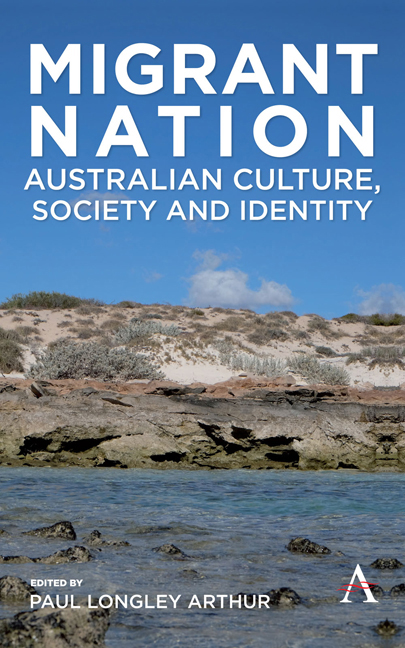Book contents
- Frontmatter
- Contents
- List of Figures
- 1 Introduction: Transcultural Studies in Australian Identity
- 2 Remembering Aboriginal Sydney
- 3 Files and Aboriginal Lives: Biographies from an Archive
- 4 Writing, Femininity and Colonialism: Judith Wright, Hélène Cixous and Marie Cardinal
- 5 The Staging of Social Policy: The Photographing of Post-War British Child Migrants
- 6 Writing Home from China: Charles Allen's Transnational Childhood
- 7 Australian? Autobiography? Citizenship, Postnational Self-Identity and the Politics of Belonging
- 8 A Nikkei Australian Story: Legacy of the Pacific War
- 9 Displaced Persons (1947–52) in Australia: Memory in Autobiography
- 10 Between Utopia and Autobiography: Migrant Narratives in Australia
- 11 Vietnamese–Australian Life Writing and Integration: The Magazine for Multicultural and Vietnamese Issues
- 12 Heroes, Legends and Divas: Framing Famous Lives in Australia
- List of Contributors
- Index
2 - Remembering Aboriginal Sydney
Published online by Cambridge University Press: 10 May 2018
- Frontmatter
- Contents
- List of Figures
- 1 Introduction: Transcultural Studies in Australian Identity
- 2 Remembering Aboriginal Sydney
- 3 Files and Aboriginal Lives: Biographies from an Archive
- 4 Writing, Femininity and Colonialism: Judith Wright, Hélène Cixous and Marie Cardinal
- 5 The Staging of Social Policy: The Photographing of Post-War British Child Migrants
- 6 Writing Home from China: Charles Allen's Transnational Childhood
- 7 Australian? Autobiography? Citizenship, Postnational Self-Identity and the Politics of Belonging
- 8 A Nikkei Australian Story: Legacy of the Pacific War
- 9 Displaced Persons (1947–52) in Australia: Memory in Autobiography
- 10 Between Utopia and Autobiography: Migrant Narratives in Australia
- 11 Vietnamese–Australian Life Writing and Integration: The Magazine for Multicultural and Vietnamese Issues
- 12 Heroes, Legends and Divas: Framing Famous Lives in Australia
- List of Contributors
- Index
Summary
Aboriginal Sydney has two histories. The first is well known, centred in Redfern, and includes the history of the Aboriginal Legal Service, the Medical Service and the radical housing plan known as the Block. The second is much less known, and of much less interest to historians. This is the history of those who have always lived in Sydney, who would be known now, if they lived in northern or central Australia, as Traditional Owners. In Sydney, they know themselves, and are respected by some, as the Traditional Custodians. They have formed legal entities known as Local Aboriginal Land Councils or, in areas where they are precluded from doing so by peculiarities of the NSW Aboriginal Land Rights Act, they recognize themselves as elders.
It is true that the majority of Aborigines now living in Sydney have come from other areas of Australia. This chapter concerns the 5 per cent of Sydney Aborigines who have always belonged here – what they can trace, or wish they could trace, of their cultural ancestry back to the time of Governor Arthur Phillip. Some have even managed to go beyond Captain James Cook. Maria Locke and her brother Colebee were the documented children of Yellomundee and grandchildren of Goombeeree, both of whom met Phillip during his first explorations in what became Sydney's west. Yet all the Custodians – whether from the Sydney clans Darug or Gai-Mariagal, Guringai or Darkinjung, Gundangara or D'harawal – have lost some parts of their former life. The lucky ones stand on rocks of memory, story, ethnography and genealogy; the unlucky grasp at mist.
Arranging for Posterity
Long-term recognition was not all achieved by luck. The most intact genealogical records are those that begin with an Aboriginal ancestor who married a colonist or convict, or in some way drew attention to himself or herself, during the colony's first three decades. Maria Locke managed both. She had already attracted favourable notice as the top student in Macquarie's Blacktown Native Institute when, in 1824, she married the convict Robert Locke. Because of her societal stature and because Robert was a white man, the particulars were noted in a marriage certificate. They bore nine surviving children.
- Type
- Chapter
- Information
- Migrant NationAustralian Culture, Society and Identity, pp. 21 - 36Publisher: Anthem PressPrint publication year: 2017



